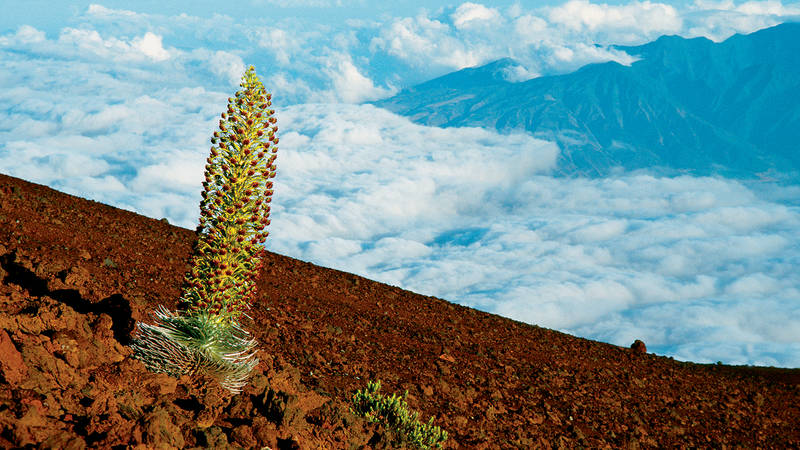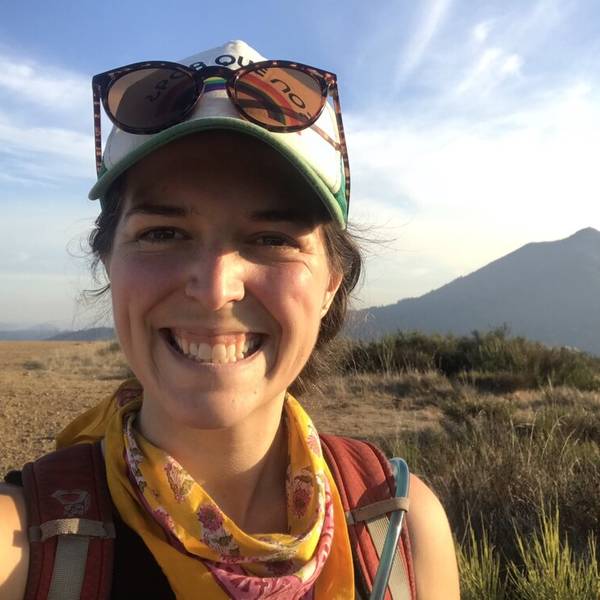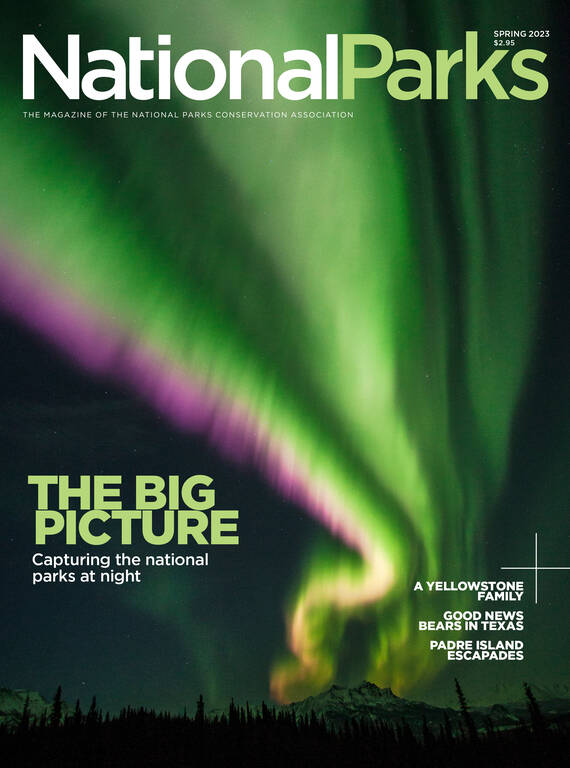Spring 2023
Home, Home on the ‘Āina
Decades before the cattle drives that established the cowboy as an icon of the American West, Hawaii developed a ranching culture of its own. Is it time for a national park site dedicated to paniolo?
The Hawaii contingent raised some eyebrows when it arrived on the dusty streets of Cheyenne, Wyoming, for the 1908 Frontier Days Rodeo. Sure, the three cowboys from the islands wore boots and denim pants and carried hand-woven lassos, just like mainlanders. But weren’t their spurs sort of tiny? And their hats, which slouched to the side instead of standing up stiff like a proper cowboy’s should, bore wreaths of fresh wildflowers around the brim.
Back home on the Big Island, Ikua Purdy, Jack Low and Archie Ka‘au‘a had established their reputations as three of the best cowboys in Hawaii, known as much for their work on commercial cattle ranches as for their winning performances in local roping competitions. But this was Frontier Days — the big leagues, the Olympics of rodeo. Few spectators believed that the “lithe youngsters from the far Pacific,” as one local paper described them, stood a chance against local Wyoming legends such as the reigning steer-roping champion, Angus MacPhee.
The skeptics failed to account for the fact that Purdy, Ka‘au‘a and Low belonged to a lineage of Hawaiian cowboys, or “paniolo,” who’d begun perfecting the art of wrangling cattle decades before long-distance cattle drives became common in the Western U.S. For nearly 200 years, paniolo have shaped Hawaii’s economy, culture and environment. Now, NPCA is working with locals to explore the possibility of establishing a national park site that honors and preserves paniolo culture and heritage throughout the islands.

Silversword Fight
In Haleakalā National Park, a charismatic plant battles for survival.
See more ›The cattle that Purdy, Ka‘au‘a and Low grew up wrangling descended from a small herd of longhorns that had arrived in Hawaii in 1793, a gift to King Kamehameha I from British Royal Navy Capt. George Vancouver. Thanks to the islands’ mild climate and the lack of predators — not to mention a royal decree that forbade hunting or harming cattle — the herds soon multiplied. “And these were not cattle of good British domestic breeding,” said Billy Bergin, a retired large-animal veterinarian on the Big Island who’s written several books about paniolo history. “These animals were tough, feral and very aggressive.”
By the time King Kamehameha I died in 1819, the islands were plagued by thousands of wild cattle. They trampled fields and forests, ate thatch roofs, and hurt or occasionally even killed people who got in their way. Shortly before he died, the king loosened the ban on hunting the animals, and a few brave souls took up rifles and set out to cull the marauding herds. But their efforts were too little, too late. “Hunting cattle on foot with rifles was like trying to blow against a tornado wind,” Bergin said.
The cattle crisis mounted until the early 1830s, when King Kamehameha III got word of the operations at vast ranches in present-day Southern California. The king was impressed by reports of “vaqueros” (the Spanish word for cowboys) rounding up, penning and branding hundreds of cattle at a go. “With the graceful use of a lariat and a good horse, these few vaqueros did in a day what all the cattle tenders on Hawaii could not even do in a year,” Bergin said. Kamehameha III decided to recruit vaqueros from Alta California to bring their horses to the islands and teach Hawaiians how to handle their herds.
Bergin said the earliest Hawaiian cowboys made quick study of the vaqueros’ methods. By the late 1830s, each island boasted a homegrown workforce that knew how to break and ride horses, make saddles, forge horseshoes, and weave bridles and 40-foot lariats out of rawhide. And the cowboys could wield these tools well enough to corral the thousands of wild cattle that roamed each island. These workers came to be called paniolo — a Hawaiian language rendering of “Español” — in honor of the vaqueros who trained the first Hawaiian cowboys.
Immigrants from around the world, including Japan, Portugal, the Philippines, Korea, China and the U.S., soon joined the ranks of the Hawaiian cowboys. Over time this diverse community of paniolo adapted the vaqueros’ tools and techniques to the islands’ environment and traditions. Hawaiian saddles became sleeker and lighter. Island cowboys adopted smaller spurs to avoid tripping on sharp lava rocks. Instead of the standard felt or leather hats favored by mainland cowboys, paniolo wore lightweight hats woven from the broad, coarse leaves of hala trees. The vaqueros brought guitars with them to Hawaii, and the paniolo picked up the habit of composing what Bergin calls “cowboy music, which is all about love, love lost, tragedy and the feeling of being upended under a 1,600-pound horse.” But Hawaiian cowboys tweaked their guitars’ tuning, creating the distinctively Hawaiian style and sound that’s now known as slack-key.
For them to go out and beat America’s best steer ropers on strange horses, that showed the world what Hawaii’s cowboys were made of.
Meanwhile, the paniolo’s labor and expertise powered the islands’ ranching industry, which grew throughout the 19th century as foreign powers tightened their grip on the Hawaiian Kingdom. Beginning in the mid-1800s, Europeans and Americans amassed vast landholdings and established commercial ranches on all the major islands, and by the early 20th century, domesticated cattle grazed on a third of the islands’ total landmass.
Like their mainland counterparts, Hawaiian cowboys worked long days in the saddle, covering vast distances across all manner of rugged terrain. Paniolo on the Big Island corralled cattle on the slopes of Mauna Kea and drove some down to the shore. The cowboys may not have had to worry about wolves or coyotes snatching calves from the herds en route — but they did have to worry about sharks on occasion. Until the middle of the 20th century, ships couldn’t dock at the main cattle port on the Big Island, so the only way to get cows to market was to make them swim out to ships anchored offshore.
Cowboys rode into the surf, dragging cattle behind them on a rope. Horse, rider and cow swam out to a waiting longboat, where the crew tied the cow to a hitch on the gunwale. After repeating this stunt half a dozen times, the boat was reeled — with its full complement of furiously swimming cattle — to a ship anchored in the harbor, where a crane hoisted the animals out of the water and onto the deck. Sailors used guns, harpoons and dynamite to try to deter sharks, but the predators still managed to snag the occasional bovine prize.
This was the rugged and uniquely Hawaiian tradition that Purdy, Low and Ka‘au‘a represented at Cheyenne Frontier Days in 1908. Unlike their challengers, the Hawaiians were fatigued from a weekslong journey by steamship and rail to reach Wyoming, and they competed on borrowed horses, according to David Wolman and Julian Smith’s book, “Aloha Rodeo.” Still, when the dust in the steer-roping ring had settled, the results spoke for themselves: Low placed sixth, Ka‘au‘a third and Purdy, with a time of 56 seconds, earned his title as the new steer-roping champion of the world.
“For them to go out and beat America’s best steer ropers on strange horses, that showed the world what Hawaii’s cowboys were made of,” Bergin said. Today, in ranching communities throughout the islands, slack-key guitarists still pick out ballads composed to celebrate the big victory in Wyoming. “Those three fellows are pretty much the closest thing we have to Babe Ruth and Joe DiMaggio here in the islands,” said Bergin, 82, who spent his teens working as a cowboy on the Big Island and later co-founded the Paniolo Preservation Society. The organization, based in the historic Big Island ranching town of Waimea, runs a museum celebrating paniolo and pa’u riders (women equestrians who ride in parades wearing traditional garb) and the Paniolo Hall of Fame, and is in conversations with NPCA about the campaign to establish a national park site dedicated to Hawaii’s cowboy culture.
The effort is in its early stages, said Ron Sundergill, NPCA’s senior regional director for the Pacific region, who’s connecting with ranching families and paniolo historians throughout the islands to build interest and support. Visitors to the historic Kahuku Ranch unit of Hawai‘i Volcanoes National Park can learn a bit about the islands’ ranching past, but “the story of the paniolo encompasses significant events that the Park Service’s coverage of U.S. history hasn’t yet adequately explored,” Sundergill said. This narrative includes the Hawaiian people’s consequential early encounters with Europeans and centuries of complicated exchange between Hawaii, the Americas, Europe and Asia. “The story of the paniolo is about a lot of hard work from a lot of generations of people to create this lifestyle where people are connected to their place and to each other,” said Kristina Lyons Lambert, a member of a longtime ranching family on Maui who’s helping rally support for a park site. “And over all that time, ranching has brought many different cultures together in Hawaii, all working toward a shared goal of stewarding the land.”

National Parks
You can read this and other stories about history, nature, culture, art, conservation, travel, science and more in National Parks magazine. Your tax-deductible membership donation of $25 or more entitles…
See more ›Today’s workers — some of whom, Bergin said, can claim nine generations of ranching ancestry — still run cattle on all the major islands. But “times have really changed for the cowboy out here in Hawaii,” said Joan Greenwell Anderson, a rancher and rodeo champion whose great-great-grandfather founded what is now Palani Ranch on the Big Island in the 1850s. Women began joining the industry in greater numbers in the 1970s, for one thing. Contemporary cattle hands are more likely to ride ATVs than horses, and most livestock leave the islands in the belly of a cargo jet instead of swimming through shark-infested waters. Despite modern efficiencies, many ranches are fighting to stay afloat, Anderson said. Skyrocketing land prices are cranking up development pressure on the range, and climate change is intensifying drought, which means less grass grows for cattle to graze on, so ranchers have to spend more on feed. (To be sure, the cattle industry plays a role in climate change: Agriculture, forestry and other land uses — including livestock production — yielded 6.1% of Hawaii’s greenhouse gas emissions in 2017, while livestock accounts for 14.5% of such emissions worldwide.)
While Hawaii’s remaining ranchers navigate these changes, Anderson said they’re also struggling to retain skilled workers. “Cowboys, they don’t make that much money,” she said. “The hours are long, and you’re away from home a lot. Nowadays, a lot of people just don’t want to cowboy.” She and Bergin both believe that preserving and honoring the islands’ cowboy heritage will help sustain the tradition through the challenges of the present and might even help recruit future generations of paniolo.
“I’d like our kids to know what it’s all about and get them interested in the paniolo lifestyle,” Anderson said. “In some small way, I hope that will help our ranches continue.”
About the author
-
 Julia Busiek Author
Julia Busiek AuthorJulia Busiek is a writer living in Oakland. She's worked in national parks in Washington, Hawaii, Colorado and California.



